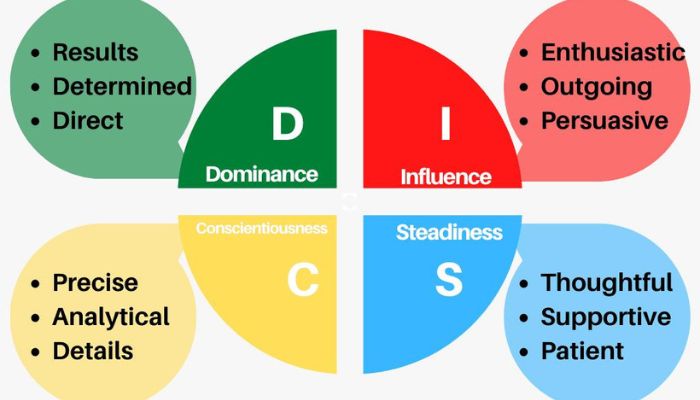
Business Blogs
Welcome to our business blog, where innovation meets insight.
Discover industry trends, expert advice, and thought-provoking perspectives on the latest developments in business, and leadership. Stay ahead of the curve with our curated content designed to inspire, inform, and elevate your business acumen.
Join us on a journey of discovery, as we explore the dynamic landscape of entrepreneurship, strategy, and success.
Let our blog be your go-to resource for staying informed and empowered in the ever-evolving world of business

Unlocking Success in the Workplace with DISC: A Powerful Tool for Understanding and Improving Interactions
"DISC, which stands for Dominance, Influence, Steadiness, and Conscientiousness, is a powerful tool that can help individuals and teams gain insights into their behaviour and communication styles."
In today's fast-paced and dynamic workplace, effective communication and collaboration are essential for success. Understanding the intricacies of human behaviour and personality can significantly enhance these crucial skills. This is where the DISC assessment comes into play. DISC, which stands for Dominance, Influence, Steadiness, and Conscientiousness, is a powerful tool that can help individuals and teams gain insights into their behaviour and communication styles. In this blog post, we will explore what DISC is and the benefits it offers in the workplace.

Understanding the DISC Model
The DISC model was developed by psychologist William Moulton Marston in the early 20th century. It categorises individuals into four primary personality types, each represented by a letter:
Dominance (D): People with a dominant personality are often described as assertive, competitive, and decisive. They are results-oriented and prefer taking charge of situations.
Influence (I): Influential individuals are often enthusiastic, outgoing, and sociable. They excel at building relationships, inspiring others, and are natural communicators.
Steadiness (S): Steady personalities are known for their patience, empathy, and team-oriented approach. They thrive in harmonious environments and value stability.
Conscientiousness (C): Conscientious individuals are detail-oriented, analytical, and systematic. They excel in roles that require precision and attention to detail.
Benefits of DISC in the Workplace
Enhanced Self-Awareness:
One of the primary benefits of the DISC assessment is that it helps individuals gain a deeper understanding of themselves. Recognising their dominant personality traits allows employees to play to their strengths and work on their weaknesses.
Employees can better understand their preferred communication style, work preferences, and reactions to stress, leading to improved self-management and self-regulation.
Improved Communication:
DISC enables employees to understand the communication styles of their colleagues and superiors. This knowledge allows for more effective communication, reducing misunderstandings and conflicts.
Teams can adapt their communication strategies to align with the preferences of team members, leading to clearer and more productive interactions.
Enhanced Team Dynamics:
By identifying the personality types within a team, DISC helps teams recognise their strengths and potential areas of conflict.
Teams can leverage diverse personalities to their advantage, ensuring that tasks are assigned to individuals who excel in those areas, leading to better teamwork and productivity.
Conflict Resolution:
Conflict is a natural part of any workplace, but understanding the underlying personality dynamics can facilitate smoother conflict resolution.
DISC provides a framework for addressing conflicts by helping individuals recognise and appreciate the differing perspectives and needs of others.
Employee Development:
Managers and leaders can use DISC to tailor their leadership styles to the preferences of their team members. This fosters a more supportive and motivational work environment.
The assessment can also be used for employee development plans, allowing individuals to focus on specific areas of improvement based on their personality traits.
In conclusion, the DISC assessment is a valuable tool for understanding and improving interactions in the workplace. By promoting self-awareness, enhancing communication, and fostering better teamwork, DISC can lead to a more harmonious and productive work environment. As businesses continue to prioritise effective communication and collaboration, integrating DISC into their organisational culture can be a game-changer, leading to increased employee satisfaction and overall success.

Find out more about DISC and how it can help you achieve success in the workplace today!
